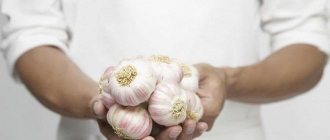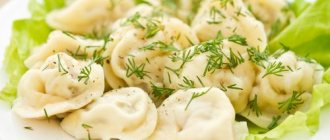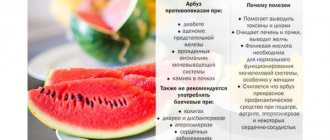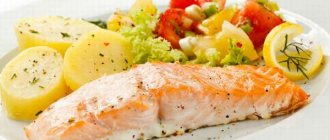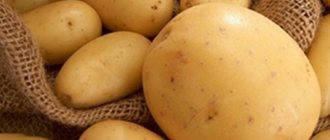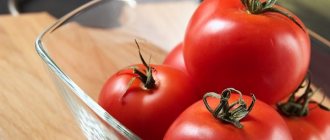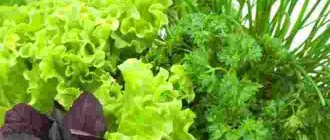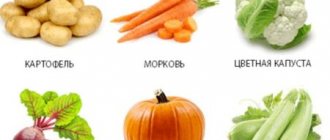Nutrition for pancreatitis is the basis for the treatment of both acute and chronic inflammation. Doctors and nutritionists have developed a nutrition system for patients with pancreatitis, which includes a list of recommendations. Among them:
- Fractional five meals a day at the same time of day.
- Warm temperature of served food.
- Neutral taste of food (not spicy, not bitter, not sweet, moderately salty). Fried, pickled, salted, smoked foods are excluded from the diet.
- When choosing foods, the emphasis is on protein foods with a minimum amount of fat.
- It is better to prepare dishes steamed or served boiled.
If you carefully consider these recommendations, it is easy to guess the list of permitted products.
- Vegetables and fruits, except exotic
- Dairy products
- Bakery products (not fresh, dried)
- Cereals (except millet cereals)
- Lean meats.
Recommended drinks include jelly, compotes, some types of juices, tea (both green and black), and alkaline mineral water.
Important! Vegetables are most acceptable for daily consumption for pancreatitis. They make up the bulk of the diet. These products contain a lot of mineral salts, vitamins and plant fiber, which are beneficial for the human body.
If we buy zucchini, eggplant, peppers and other types of vegetables in advance for preparing certain types of dishes, then cucumbers and tomatoes can be found in the refrigerator of every housewife. You can buy these vegetables, traditional for our country, in any supermarket (or market), or you can grow them yourself in your summer cottage. Hence the popular question that patients tirelessly ask gastroenterologists: is it possible to eat cucumbers and tomatoes for pancreatitis?
You can eat cucumbers and tomatoes if you have pancreatitis. However, you need to know in what form it is best to consume them, and in what quantity.
The effect of tomatoes on the body
Following strict nutritional recommendations protects patients from possible exacerbations of the disease. Most patients have no idea whether it is allowed to eat tomatoes with pancreatitis. Interest increases with the onset of summer, with the onset of the season of fresh vegetables. The effect of the fetus on the body is twofold.
Benefit:
- the pulp contains vitamins: C, A, D, K, B1-B6, B12, PP, folic and nicotinic acids, which strengthen the body;
- Selenium contained in the composition improves memory, thought processes, strengthens the immune system, and reduces the risk of developing cancer;
- normalizes metabolism due to the huge amount of microelements in the composition;
- delicate fiber in the skin has a positive effect on intestinal motility and digestibility;
- cleanses and improves intestinal microflora if you eat the fruit regularly;
- reduces the processes of putrefaction and gas formation in the intestines;
- promotes the removal of cholesterol;
- low calorie content helps normalize weight.
Harm:
- the pulp contains harmful substances that negatively affect the pancreatic parenchyma;
- difficult to digest by the stomach;
- excessively increases acid production in the stomach.
The effect of tomatoes on the pancreas
Fresh tomatoes contain oxalic acid, which affects the functioning of the pancreas. This leads to disruption of the water-salt balance, irritation of the mucous membranes of the stomach walls, and severe pain.
The harm from tomatoes is as follows:
- poorly digested;
- irritate mucous membranes;
- increase the production of gastric juice.
During periods of exacerbation of gastrointestinal diseases, eating tomatoes is strictly prohibited. Vegetables can aggravate the situation and lead to severe pain. You can eat tomatoes with caution if you have chronic pancreatitis. It is important to choose the right vegetables, as well as heat treat them.
Benefit
Tomatoes are good for the stomach. They contain fiber, which improves digestion.
Beneficial features:
- Normalize metabolism.
- Improves digestion.
- Prevents the spread of pathogenic organisms.
- Helps restore microflora.
The vegetable also contains useful vitamins and microelements necessary for the body. Magnesium helps cope with stress, iron prevents the development of anemia, phosphorus is involved in metabolic processes.
Despite the large number of useful substances, with pancreatitis, tomatoes can cause harm to the body. In addition, red fruits are contraindicated for people prone to allergies.
Negative properties of tomatoes:
- have an irritating effect on the gastric mucosa;
- increase acid production;
- have a negative effect on the pancreatic parenchyma.
During exacerbation of the disease, tomatoes are strictly prohibited for consumption. Before introducing vegetables into your diet, you should get your doctor's permission.
Eating tomatoes for a disease such as pancreatitis has both benefits and harm.
It is important to peel the peel and heat treat the fruit . You should not eat canned food, pickles, or tomato paste in the form of ketchup. During the period of remission, it is allowed to eat homemade ripe tomatoes in the form of salads, soups and stews.
It is well known that vegetables, fruits and berries are good for health. This also applies to tomatoes. But what exactly are the harms and benefits of tomatoes for the body? Are they so healthy, and are there any contraindications to eating tomatoes? In this article you will find out the answers to these and many other questions.
Is it possible or not?
When answering the question whether tomatoes are allowed if there are problems in the pancreas, it is worth considering the severity of the disease and stage. For any type of digestive disease, it is strictly forbidden to consume green, unripe tomatoes. Unripe fruits contain harmful toxins that make it difficult to digest food and create an excessive burden on the digestive organs, causing dysfunction.
For acute pancreatitis
It is absolutely contraindicated to take tomatoes during exacerbations. For the first few days, patients are only allowed to drink water and stay in bed. A week after the pain stops, patients are introduced to the menu with well-cooked and pureed vegetables.
It is forbidden to prescribe the dosage of the product yourself and overeat. The attending physician will prescribe the correct amount of food based on how you feel and the dynamics of your recovery. At this time, the saturation of the body with necessary nutrients is compensated by beets, pumpkin, cauliflower and other vegetables.
For chronic pancreatitis
In the initial phase of remission, when the pain stops bothering you, experts advise gradually expanding the list of foods you consume. It is highly not recommended to consume fresh tomatoes for pancreatitis if episodic attacks persist. It is advisable to bake the fruits in the oven or use a double boiler. Remove the skin from the finished product by grinding the mass to a pasty consistency.
Start taking tomato puree with one spoon, gradually increasing the dose with subsequent meals. Patients with chronic pancreatitis should eat only ripe tomatoes. You should not eat green or unripe tomatoes; even after heat treatment, there is still a risk of causing an exacerbation of the disease.
During the period without attacks of pancreatitis, you are allowed to eat one medium-sized tomato. If the remission phase is prolonged, you can use homemade tomato paste. When fresh, add tomatoes little by little to salads, seasoning them with vegetable or olive oil.
During the remission phase, tomatoes, like cucumbers, are gradually introduced into the patient’s diet. They are used to prepare salads, soups, as a side dish for meat, and as a snack. Since tomatoes contain coarse, delicate fiber, it is not necessary to puree them.
Tomato juice is also useful. It is better to prepare it yourself from fresh tomatoes. Drinking one glass a day of tomato juice without salt improves and normalizes intestinal function. As a result, the unpleasant symptoms of pancreatitis disappear: flatulence and bloating, diarrhea, heaviness in the stomach, bitter taste in the mouth. Tomato juice is consumed at lunch, but it is better to include it in the menu for second breakfast or lunch.
It is also better to buy homemade tomatoes, which do not contain dangerous chemical compounds. The same applies to tomato paste, which is better to make yourself from fresh tomatoes. Dyes, flavor enhancers and preservatives are added to factory-made tomato paste, which the diseased pancreas is not able to cope with.
Recommendations for use
Dishes for pancreatitis are recommended to be consumed warm, and the introduction of ingredients must be coordinated with a medical specialist.
In acute form
In the acute form of pancreatitis, the attending physician transfers the patient to a gentle therapeutic diet No. 5. The patient should refrain from consuming tomatoes in any form, including tomato juice.
In the chronic stage
If there is no pain, the patient is allowed to eat heat-treated tomatoes (steamed or oven-cooked) in combination with other foods: lean meat, fish, chicken eggs. Before use, the fruit is peeled and the pulp is ground into puree. Tomato juice for chronic pancreatitis is a healthy drink, which is recommended to be diluted with water in a ratio of 1:2.
Tomato juice is a healthy drink for chronic pancreatitis.
Pickled and salted vegetables are strictly prohibited for this disease.
Tomato should be introduced into the menu gradually, starting with 1 spoon. In this case, the maximum amount should not exceed 100 g per day.
During exacerbation of the disease
If there is a second attack, tomatoes are completely excluded from the menu and returned to the diet only 7 days after the symptoms of the exacerbation have stopped.
During remission
With stable remission, a patient with pancreatitis needs to monitor the reactions of the gastrointestinal tract to food and adhere to the rules recommended for the chronic form of the disease.
Tomato juice is allowed to be consumed undiluted, but not more than 100 ml per day.
Tomato paste for cooking should not contain additives and preservatives that cause inflammation.
Tomato paste should not contain additives or preservatives that cause inflammation of the pancreas.
Cholecystopancreatitis
Patients with cholecystitis are recommended to drink the juice warm. Vegetable soups based on low-fat broth, baked, stewed or boiled tomatoes are also allowed.
In addition, salads seasoned with vegetable or olive oil are allowed.
In this case, the amount of tomatoes should not exceed 300 g per day. In case of cholecystopancreatitis, it is necessary to exclude from the diet tomato paste with seasonings, ketchup, pickled and canned vegetables, as well as unripe and uncooked tomatoes.
We recommend reading: Zucchini dishes for pacreatitis
For pancreatitis and gastritis
For pancreatitis and gastritis, tomatoes should not be combined with meat, fish and eggs. This will complicate the process of digesting food, cause diarrhea and flatulence, and worsen the general condition of the patient. Dishes with tomatoes should be introduced into the menu gradually and cooked by steaming or in the oven. Tomato juice is allowed for consumption in diluted form, without adding salt and sugar.
For pancreatitis and gastritis, tomatoes should not be combined with meat.
Fresh tomatoes
Tomatoes are an undesirable product for consumption with pancreatitis. But do not forget that tomatoes contain many useful substances that the human body also needs. Every patient should know that tomatoes can only be eaten according to certain rules: They must be ripe. Green and unripe fruits cannot be used; wait until they are ripe.
During an exacerbation, it is not recommended to eat tomatoes, as they can provoke attacks. Eat fruits only in the stage of remission of the disease. Be sure to have homemade tomatoes grown in the natural environment without additional preparations. The opinions of experts regarding the use of tomatoes are quite different. Some believe that the fruits can be consumed and have a positive effect on the pancreas.
Others believe that vegetables contain toxins that negatively affect the disease. It should be noted that eating fresh tomatoes can even be beneficial for inflamed pancreas, since dangerous components in tomatoes are found only in unripe and green tomatoes.
Vegetables can be eaten during pancreatitis, as they contain delicate fiber that helps remove cholesterol. When tomatoes are used correctly, swelling decreases and your mood improves.
How to choose
Unripe tomatoes contain toxic substances that persist even after heat treatment. Toxins can activate the inflammatory process and provoke an attack of pancreatitis.
For cooking, you should choose only ripe and fresh fruits.
For cooking, the patient should use only ripe and fresh fruits.
We recommend reading: Using sour cream in food for pancreatitis
How to choose tomatoes
- The fruits must be ripe and free from defects.
- Skin without rot.
- The smell is pleasant.
- Before eating, be sure to wash the tomatoes and peel the skin.
Heat treatment is required - this can be steaming or baking in the oven. It is better to start introducing vegetables into the diet with puree, boiled over low heat for 10-15 minutes.
Persistent remission allows you to prepare a tomato salad with vegetable oil and herbs. You are allowed to eat no more than 2 fruits per day.
Video on the topic:
Salted tomatoes
A wide variety of homemade rolls using tomatoes is prohibited for people who suffer from pancreatitis, even in remission. Experts prohibit the consumption of dishes that were prepared using marinade, large amounts of salt and spices. Tomato rolls in their own juice or stuffed are also prohibited.
Any canned products contain substances in their composition that have an extremely negative effect on the course of pancreatitis. Similar products include:
- Table vinegar, apple cider vinegar and other types of acetic acid;
- Salt in large quantities in combination with sugar causes an exacerbation of the disease;
- Certain culinary recipes use citric acid, which has an extremely adverse effect on patients who have pancreatic diseases;
- The use of seasonings, spices, garlic, pepper.
As mentioned above, you can’t eat tomatoes for pancreatitis in the form of ketchup, paste, or sauce, since they contain a full list of components that can’t be consumed for this disease. Store-bought products include preservatives, dyes, and substitutes. Even if you have had attacks for a long time, you should not put yourself at risk. Eating salted tomatoes will provoke an exacerbation of the disease.
Stewed tomatoes
Stewed tomatoes are allowed in moderation. Do not add salt or spices during cooking.
How to stew tomatoes:
- The fruits should be washed and peeled.
- Next they need to be cut into large slices.
- Then add fresh grated carrots.
- Simmer the vegetables over low heat, covered, for about 20 minutes.
It is allowed to add dill to the dish. When properly prepared, tomatoes have a beneficial effect on the gastric mucosa.
Is it possible to drink tomato juice when sick?
As it turned out, tomatoes are not prohibited for pancreatitis, but does this statement apply to tomato juice? Unfortunately, this healthy, vitamin-rich, tasty drink in the presence of an acute stage of pancreatitis, as well as in case of stomach ulcers, is one of the products that doctors are forced to prohibit. There are a number of reasons for this:
- raw pulp contained in the drink can cause gas and diarrhea;
- the juice has a choleretic effect, which can result in activation of aggressive enzymes;
- a high salt content often leads to swelling of the pancreas;
- organic acids that are concentrated in the juice can cause excessive production of gastric juice and also activate the production of pancreatic enzymes.
Contrary to the existing opinion that tomatoes can be dangerous for pancreatitis, it is worth noting that the main restriction on the use of this product relates to the period of exacerbation of the disease. At the stage of stable remission, this healthy juice can be introduced into the diet in reasonable doses. However, we are only talking about a self-prepared drink.
During an exacerbation of pancreatitis, tomato juice should not be consumed for the following reasons:
- Tartaric, oxalic and other acids included in the composition irritate secretory cells. The released enzymes have a destructive effect on pancreatic tissue, exacerbating inflammation.
- Dietary fiber included in the structure of the vegetable aggravates diarrhea and bloating.
- The choleretic effect of the juice leads to the reflux of bile components into the gland ducts and activates the action of aggressive enzymes.
- The salt contained in the juice causes swelling of the gland tissue, which leads to increased pain.
Tomato juice for pancreatitis in the remission phase can be drunk, diluted with carrot and pumpkin juice, accelerating the recovery process. If pancreatitis has been in a chronic stage for many weeks, you can allow yourself to drink a glass of pure juice without adding salt.
Tomato juice is useful in reasonable quantities during remission of the disease. Allowed is 1 glass of drink per day, diluted with water 1:1.
Homemade juice contains vitamins and microelements that are beneficial for the body. Serotonin in the composition helps to get rid of depression.
If side symptoms appear, such as abdominal pain, changes in stool, it is recommended to exclude tomato juice from the diet.
Tomato juice for pancreatitis in remission can be consumed if it is diluted with additional carrot and pumpkin juice, which will speed up the process of recovery. If pancreatitis has been chronic for months, then you are allowed to drink no more than a glass of pure tomato juice without salt. Making safe tomato juice The introduction of tomatoes into the diet menu for pancreatitis and gastric ulcers is possible only with stable remission.
Before drinking, it is recommended to dilute tomato juice with water in a ratio of 1 to 1. In this case, it is imperative to listen to the sensations of the body and if there is even the slightest unpleasant sensation in the stomach, stop drinking tomato juice. Tomato juice is certainly a valuable product. It should not be completely excluded from your diet menu.
The beneficial effect of juice on the body is determined by the following:
- Juice is a supplier of nutrients and vitamins to the body.
- The product is low-calorie.
- The presence of serotonin in the structure helps to avoid depressive mood.
- The drink contains phytoncides and is therefore antimicrobial.
- Lycopene, which retains its own activity even after heat treatment, helps the body fight cancer cells.
The list of advantages demonstrates that tomatoes are beneficial for pancreatitis, but only in the remission stage and with careful use. For this reason, if the degree of illness makes it possible to consume such a product in the diet, then there is no need to neglect it.
How to make tomato juice safe
Careful introduction of tomatoes into the diet for pancreatitis and stomach ulcers is possible only during a period of stable remission. If we talk about a product such as tomato juice, it is recommended to dilute it with water in a 1:1 ratio before use. In this case, you need to carefully listen to the body’s reaction and stop the experiment at the slightest doubt.
Tomato juice is undoubtedly a valuable product for the body, so completely excluding it from the diet would be a mistake. The beneficial effects of this drink on the body are expressed in the following:
- juice is a supplier of microelements and vitamins;
- this product is considered low-calorie;
- the presence of serotonin in the composition helps to avoid depression;
- thanks to phytoncides, the drink has an antimicrobial effect;
- lycopene, which retains its activity even after heat treatment, helps the body fight cancer and atherosclerosis.
A decent list of benefits indicates that tomatoes are more beneficial than harmful for pancreatitis. Therefore, if the stage of the disease allows you to eat this vegetable, you should not neglect the opportunity to enrich the damaged organs with useful substances, as well as maintain immunity at the proper level.
Eating tomatoes for pancreatitis of the pancreas
Fresh tomatoes
Heat treatment is required - this can be steaming or baking in the oven. It is better to start introducing vegetables into the diet with puree, boiled over low heat for 10-15 minutes.
Fresh tomatoes
Tomatoes provide the body with an excellent concentration of vitamin C and beta-carotene, a very good amount of manganese, as well as vitamin E. They are high in potassium and vitamin K. The list of phytonutrients is extremely diverse:
- Flavonoids: naringenin, rutin, kaempferol, quercetin
- Hydroxycinnamic acids: caffeic acid, ferulic acid, coumaric acid
- Carotenoids: lycopene, lutein, zeaxanthin, beta-carotene
- Glycosides: esculeoside
- Fatty acids: 9-oxo-octadecadienoic acids
Specific antioxidants in tomatoes work in different ways. Some reduce lipid oxidation in cell membranes and blood (oxygen is known to damage cell membranes). Sometimes this protection comes in the form of improved antioxidant enzyme function. There is more than one study showing the antioxidant protection provided by tomatoes on bones, liver, kidneys and blood.
Harm of tomatoes
In what cases can tomatoes be harmful? Of course, there are such cases.
Firstly. there is a universal contraindication #8212; allergy to a particular product.
Secondly. It is not recommended to eat tomatoes if:
- you suffer from arthritis
- kidney diseases, gout
- gastritis, stomach ulcer, cholelithiasis, pancreatitis (in the acute stage)
The diet for heartburn does not include eating tomatoes during the acute stage of symptoms.
It's all about oxalic acid... and some other organic acids that make up tomatoes. Oxalic acid disrupts water-salt metabolism and is therefore not beneficial to the kidneys. As for other organic acids that make up tomatoes, they can irritate the mucous membrane that is vulnerable to inflammation and lead to pain.
However, the harm of tomatoes still requires additional research. For example, there is not enough data on the effect of tomatoes on arthritis.
If you have inflammation of the pancreas (pancreatitis), you can eat tomatoes, but not always and not all of them.
About the benefits
- Ripe tomatoes Moderate consumption of fresh tomatoes is considered beneficial for this diagnosis, as they contain valuable biological substances necessary for the health of the body. In particular, the delicate fiber structure of tomatoes helps remove excess cholesterol, which has a beneficial effect on the functioning of the pancreas.
- Stewed tomatoes If we talk about the benefits of tomatoes, you can also eat stewed, baked, steamed, boiled tomatoes for pancreatitis. These vegetables need to be cooked without the skin. Experts say that properly cooked tomatoes have a positive effect on the healing of the pancreatic mucosa.
- Tomato juice For pancreatitis, tomatoes can be introduced into your diet in the form of freshly squeezed tomato juice. This juice ensures the active functioning of the digestive system. It is useful to mix the drink, for example, with pumpkin or carrot juice. You can drink one glass of freshly prepared tomato juice per day without adding salt. You cannot replace freshly squeezed tomato juice with store-bought juice, as it contains harmful additives.
About the harm
- Unripe green tomatoes Unripe green tomatoes, which contain a large amount of toxic substances, put a strain on the diseased pancreas. It is strictly forbidden to eat such tomatoes not only raw, but also processed, as they can easily cause an exacerbation of the disease.
- Tomato paste, ketchup, canned tomatoes You should avoid eating tomato seasonings, ketchups, homemade and industrially prepared pickled and salted tomatoes due to the presence of acetic and citric acid, salt, and hot seasonings in these products. In addition, pastes, ketchups and store-bought tomatoes contain various dyes, preservatives and other artificial additives, which aggravate the inflammatory process of the pancreas. You should also not eat home-prepared canned tomatoes in their own juice.
The presence of a disease such as pancreatitis imposes responsibility on the patient for his own nutrition. During an exacerbation of the disease, you should strictly obey the doctor’s recommendations and forget about tomatoes during this period. A week after the attacks, you can gradually eat well-mashed boiled tomatoes, after consulting with your doctor.
Moderate consumption of ripe and properly prepared tomatoes for pancreatitis will help you find a friend, helper and healer in this healing vegetable.
Attention! Articles on our website are for informational purposes only. Do not resort to self-medication, it is dangerous, especially for pancreatic diseases. Be sure to consult your doctor! You can make an online appointment with a doctor through our website or select a doctor in the catalog.
Inflammation of the pancreas is a serious disease, the treatment of which requires a special diet. Therefore, is it possible to eat tomatoes with pancreatitis #8212; people with this problem wonder.
After all, everyone knows how many substances beneficial to the body are stored in this vegetable. Tomatoes can have both positive and negative effects on the body.
It all depends on the stage of development of the disease and in what form they are consumed.
Doctors and nutritionists advise people who have an inflamed pancreas. Treat this product with caution, despite the fact that it is rich in minerals and vitamins. But there is no need to exclude it from your diet.
If doctors have diagnosed a person with acute pancreatitis. significant adjustments are made to his regular diet. A proper diet is an important step on the path to recovery.
In the first week of exacerbation of the disease, doctors do not recommend that their patients take any vegetables. Only after 7-10 days can patients be fed pureed vegetables. Experts do not recommend eating tomatoes in the acute stage.
Because at this time the pancreas is not ready for such a load.
In order for the body not to feel a deficiency in vitamins and minerals, tomatoes must be replaced with more gentle, but no less healthy products: potatoes, carrots, pumpkin.
Under no circumstances should fresh tomatoes be included in a patient’s menu. Vegetables should be baked in the oven, stewed or cooked in a double boiler. Before eating tomatoes, peel them and grind the pulp into puree.
Tomatoes are eaten only if they are well ripe. Green fruits can harm the pancreas and provoke an exacerbation of the disease.
You should not adjust your daily diet on your own so as not to harm yourself.
Among gastric diseases, gastritis, stomach ulcers and cholecystitis are considered very common. Cholecystitis is an inflammation of the gallbladder. His treatment involves a strict diet.
With this disease, patients can only eat boiled or steamed vegetables.
Tomatoes for cholecystitis and pancreatitis are taken under the same conditions: if the disease is in remission and only in properly prepared form (fried vegetables should never be included in the patient’s menu). Tomatoes for gastritis are also not a taboo product.
Tomatoes are peeled and added to salads or eaten with main courses: potatoes, various cereals, etc. During the period of remission, you can eat only those tomatoes that are well ripened and have soft flesh.
It is strictly forbidden to take green vegetables. They will irritate the gastric mucosa and may cause complications.
Tomatoes for ulcers #8212; is it possible or not? If you have a stomach ulcer, doctors recommend that their patients stop taking tomatoes, both fresh and canned. This product increases the acidity of the stomach and can negatively affect the patient's health.
When a patient with inflammation of the pancreas has a question about whether it is possible to eat tomatoes with pancreatitis, first of all, he needs to become familiar with the beneficial and harmful properties of this vegetable. What are the benefits of tomatoes for the human body? There are actually many arguments in favor:
- this vegetable is rich in delicate fiber, which has a beneficial effect on the functioning of the gastrointestinal tract and is easily absorbed by the body;
- Regular consumption of tomatoes improves the state of intestinal microflora;
- tomatoes help reduce rotting processes in the intestines;
- they remove cholesterol from the body;
- Patients whose diet included tomatoes noticed improved digestion and increased secretion of gastric juice.
In addition to beneficial properties, tomatoes also have harmful ones:
- Tomatoes may contain toxins that adversely affect the condition of the pancreas.
- It is difficult for the stomach to digest tomatoes. Nutritionists classify this vegetable as a heavy food for the body.
- Tomatoes increase stomach acidity.
People who have problems with the gastrointestinal tract should absolutely not eat tomatoes if they:
- green and not fully ripe;
- very sour;
- canned or pickled.
It is contraindicated to eat tomatoes during an exacerbation of pancreatitis; you cannot independently increase the daily dose of this product and overeat.
To ensure that eating tomatoes brings only maximum benefit to the body and does not cause any harm, you should definitely consult with your doctor.
Fresh tomatoes
Tomato paste and ketchup for pancreatitis
The use of industrially produced ketchup and tomato paste in food is highly discouraged for patients with pancreatitis. During preparation, the composition includes various preservatives, spices, thickeners, starch and dyes that negatively affect the functioning of the gland. Chemical additives do not make food healthy and are undesirable for consumption even by a healthy person.
You should absolutely not eat store-bought ketchup and tomato paste. They contain dyes, citric acid, salt and spices. Additives have a negative effect on the gastric mucosa and irritate it.
Tomato paste can be prepared at home. This dish does not have a bad effect on the gastrointestinal tract. You can also make ketchup yourself, without adding salt, sugar or spices.
To prepare tomato paste, peeled ripe tomatoes are passed through a meat grinder. Pour the mixture into a saucepan and simmer for at least 4 hours until it thickens. Place the paste in glass jars and put it in a cool, dark place.
Tomato paste
A product such as tomato paste, which is produced industrially, is also not permitted for pancreatic dysfunction and stomach ulcers. So why can’t you eat such a seemingly harmless product? The answer to this question is obvious. The production technology of this product involves the use of various preservatives. In addition, there are unscrupulous manufacturers who add various ingredients to the paste that provoke an exacerbation of the disease in a matter of hours. Therefore, before risking your health, you should think about the dubious benefits of such a product.
It's a completely different matter when tomato paste is prepared at home. This dish can be considered a “healthy” food. In order to get tomato puree, you need to take well-ripened fruits, cut them into small slices and pass them through a juicer. The resulting juice must be poured into a saucepan and boiled for four hours until it thickens. The finished product is placed in sterile jars and stored in a cool place.
How to eat tomatoes
Most often, the ban on eating tomatoes extends to the period of exacerbation. During this time, as well as for several months after the pain subsides, it is advisable to follow a strict diet. But it is allowed to include tomatoes in the diet for chronic pancreatitis. First, they are consumed after heat treatment. Peel the tomatoes, cut off the area near the stalk and all the white hard areas. Then they are baked in the oven or steamed. You can also chop the fruits and boil them. You need to start eating tomatoes with a small amount of this puree.
If tomatoes do not cause discomfort, you can gradually increase their amount in the diet. But even if you feel well, it is permissible to eat no more than 2-3 medium-sized fruits. In case of stable remission, you can eat salads made from finely chopped tomatoes. Homemade tomato juice without salt is also useful, which must be brought to a boil. Freshly squeezed juice can cause an enlargement of the pancreas or an exacerbation of the disease. You can get a healthy drink if you mix it with carrot or pumpkin.
For pancreatitis, only ripe tomatoes grown in open ground and not in a greenhouse are consumed. Do not eat green or unripe hard fruits. They contain many acids that irritate the pancreas. Prohibited products also include tomato paste, ketchup, store-bought tomato juice, and canned tomatoes. After all, their production uses a large amount of salt, as well as seasonings that should not be consumed by people with a diseased pancreas.
Tomatoes for acute pathology
In acute pancreatitis, the diet excludes the consumption of fresh vegetables. Tomatoes irritate the mucous membranes and worsen a person’s well-being.
During the acute stage of the disease, doctors advise to refrain from any dishes with the addition of tomatoes. Green vegetables contain toxins that impair the digestion of food, cause stomach upset, and lead to the development of pathologies.
A vegetable containing oxalic acid, even in cooked form, can harm the pancreas during an exacerbation of the disease. Only after the attacks have stopped is it possible to introduce tomatoes into the diet.
What can you replace tomatoes with?
It is better to forget about tomatoes during an exacerbation, replacing them in the menu with healthy foods: carrots, pumpkin, sweet peppers, beets, zucchini, spinach, green peas, cauliflower, and other permitted vegetables.
Beets, which contain iodine, which normalizes gland function, are considered surprisingly beneficial for patients. It is recommended to take 150 g of the vegetable once a day, grated, half an hour before meals, daily. After two weeks, relief is noted. Such substitutes have a positive effect on the functioning of the digestive system and are allowed even for patients with diabetes, which often accompanies inflammation of the pancreas.
Relapses will not occur if you consume tomatoes and their derivatives in moderation, allowing you to maintain normal pancreatic function.
Tomato recipes
Tomatoes for pancreatitis will diversify the patient’s diet and enrich it with useful substances. But the vegetable should be consumed in acceptable quantities, and dishes should be prepared according to the doctor’s recommendations.
Tomato salad
- Treat the fruit with boiling water.
- Finely chop.
- Add herbs, salt and vegetable oil.
Tomato with egg
- Cut off the tops of ripe tomatoes.
- Pour boiling water over the tomatoes.
- After 2-3 minutes, remove the peel and remove the pulp.
- Add salt and butter (as agreed with your doctor).
- Break the egg inside the prepared vegetable.
- Place the dish in a preheated oven.
- Bake for 10-12 minutes at +200°C.
Omelet with tomatoes and onions
- Heat a frying pan over high heat.
- Grease with oil.
- Add chopped onions and tomatoes to the pan and stir.
- Add salt and simmer over medium heat for 5 minutes.
- Beat the egg and pour the contents into the pan.
- Add greens if necessary.
- Remove from heat after the mixture thickens.
Baked in the oven
- Cut the tomatoes into several parts. The size of 1 slice should be such that the tomato does not fall with pulp onto the baking sheet.
- Line a baking sheet with parchment paper and sprinkle with olive or vegetable oil.
- Lay out the slices.
- Mix approved herbs and sugar.
- Sprinkle over vegetables.
- Add chopped garlic.
- Place in the oven, preheated to +120°C for 4-5 hours. If there is no convection mode, place a pencil between the door and the oven.
- Sterilize the jar and pour a small amount of sunflower or olive oil after the container has cooled.
- Place the finished tomatoes in a jar, pour oil over them and put them in the refrigerator.
In its own juice
- Pour boiling water over the tomatoes and leave for 2-3 minutes.
- Quickly plunge into ice water to remove the skin.
- Sterilize the container for the workpiece.
- Chop the fruit, boil and grind through a sieve to obtain a homogeneous mixture.
- Place the liquid mixture on low heat to thicken.
- Add salt, sugar and mix well.
- Pour the resulting mixture into the prepared container.
Summer soup
- Cut the potatoes into small cubes, add water and put on the fire to boil.
- Stew onions and carrots, add to potatoes.
- Mix finely chopped tomatoes and peppers (not hot) and place in a saucepan.
- Add salt if necessary and leave over medium heat for 5 minutes.
Contraindications
Despite the large number of vitamins in the structure of the vegetable, as well as the positive effect on the course of digestion, in certain situations, tomatoes have their contraindications for pancreatitis. Whether or not it is allowed to eat tomatoes depends on the degree and form of the disease, as well as on the presence of heat treatment of the tomato. When they are contraindicated: In case of chronic disease, fresh tomatoes are contraindicated.
During an exacerbation, tomatoes are contraindicated, especially large and large ones. Green and unripe tomatoes are prohibited. Tomato paste. Ketchup and tomato sauces. Store-bought tomato pickles. If you have pancreatitis, you must take responsibility for your own well-being and strictly adhere to your diet. If your doctor does not allow you to consume tomatoes, then you should definitely follow his advice.
The effect of vegetables on the disease
Whether or not you can eat tomatoes when you are sick depends on the severity of the disease. It is strictly forbidden to consume green and unripe tomato fruits. They contain harmful substances that put a strong strain on the digestive organs.
In case of chronic pancreatitis, if there are no painful attacks, it is allowed to introduce tomatoes into the diet.
Vegetables are steamed or baked in the oven. Raw tomatoes interfere with the functioning of the pancreas and promote fermentation processes.
The acute form of pancreatitis excludes the consumption of vegetables, despite the fact that they contain micronutrients. During an exacerbation, the pancreas does not work properly, causing diarrhea, bloating, nausea and vomiting.
Possible risks
The biggest risks associated with eating tomatoes for pancreatitis are their excessive absorption. It will be possible to avoid possible complications if, during an exacerbation of the disease, you exclude them from the diet altogether, and in the stage of stable remission, eat one fruit at one meal. The main thing is to listen to your body and if any unpleasant symptoms occur in the digestive tract, stop eating them. Other troubles are possible if contraindications are ignored.
Sources: https://gastrotract.ru/bolezn/pankreatit/pomidory-pri-pankreatite.html pankreatit.su/ogurcy-pomidory/ https://vseozhivote.ru/pishhevarenie/podzheludochnaya-zheleza/pomidory-pri-pankreatite.html https://pankreatit.guru/pitanie/produkty/ovoshhi/pomidory https://ogkt.ru/pankreatit/pomidory-pri-pankreatite-mozhno-kushat-ili-net-otzyvy.html https://ilive.com. ua/food/pomidory-pri-hronicheskom-pankreatite-svezhie-varenye-i-tushenye_129720i16122.html https://diabetiko.ru/ogurcy-pomidory-pankreatite https://gormonoff.com/pitanie/pomidory-pri-pankreatite This The material is purely subjective and is not a guide to action. Only a qualified specialist can determine an accurate diagnosis and prescribe treatment.
Last modified: 03/20/2020
